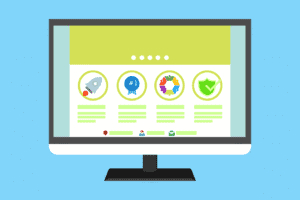
Ultimate Web Development Roadmap: Step-by-Step Guide to Building Modern, Scalable Websites
Introduction
Web technology changes fast. New tools and best practices appear all the time. To stay ahead, following a clear plan makes sense. Whether you’re a beginner or an experienced developer, a roadmap helps you work smarter, avoid mistakes, and make high-quality websites.
Everyone expects sites to be fast, mobile-friendly, and secure. Search engines also prioritize websites that deliver a good experience. Meeting these demands means knowing exactly what to do from start to finish. With this guide, you’ll learn how to build websites that meet today’s standards efficiently.
Understanding Web Development Fundamentals
What is Web Development?
Web development covers creating websites and online apps. It involves both designing how the site looks and making it work behind the scenes.
- Front-end development focuses on what users see and interact with. This includes layouts, buttons, and menus.
- Back-end development is about server-side code. It handles data, user accounts, and how the site stores information.
- Full-stack development combines both. Full-stack developers can build everything from interface to database.
Key Technologies and Tools
Several core technologies set the foundation for most websites:
- HTML gives structure to pages.
- CSS styles the content.
- JavaScript adds interactivity.
Popular frameworks and libraries help speed up development:
- React, Angular, and Vue.js are common for creating dynamic UIs.
- Version control systems like Git and GitHub track changes and collaborate smoothly.
Importance of Planning and Requirements Gathering
Before coding, plan your site carefully:
- Understand who will use it and what they need.
- Define clear project goals and scope to keep on track.
- Create sketches or digital wireframes to visualize the layout.
Good planning saves time and reduces errors in the long run.
Designing User-Centric and Responsive Websites
UI/UX Design Principles
Designing for users should be your top priority:
- Make navigation simple and accessible.
- Use clear typography and consistent colors.
- Follow best practices with tools like Figma or Adobe XD to craft prototypes that catch issues early.
Responsive Web Design
Most traffic comes from mobile devices. How your site adapts matters:
- Mobile-first approach starts with small screens, then expands.
- Use media queries and flexible grids to adjust layouts.
- Test your design on different devices to ensure it looks good everywhere.
Incorporating Branding and Visual Identity
A well-branded website builds trust:
- Keep visual elements consistent, like logos and colors.
- Use images and storytelling to engage visitors.
- Strong visual identity makes your site memorable.
Developing the Front-End: Building the User Interface
Setting Up the Development Environment
Choose your tools wisely:
- Popular IDEs include VS Code and Sublime Text.
- Organize your project files logically.
- Use best practices to keep your code clean and manageable.
Implementing Core Features
Bring your design to life:
- Render dynamic content based on user actions.
- Make buttons and forms interactive with JavaScript.
- Use frameworks like React or Vue.js to structure code better and add power to your site.
Optimization Techniques
Speed is key:
- Lazy load images and scripts to improve load times.
- Minify CSS and JavaScript files to reduce size.
- Follow WCAG standards to make your site accessible to everyone.
Back-End Development and Database Integration
Choosing the Right Back-End Technology
Select tools that fit your needs:
- Languages like Node.js, Django (Python), or Ruby on Rails are popular.
- Follow RESTful API principles to connect front-end and back-end smoothly.
- Think about where and how you’ll host your site.
Database Design and Management
Data storage is critical:
- Use relational databases (MySQL, PostgreSQL) for structured data.
- Use NoSQL tools (MongoDB) for flexible data models.
- Good data design ensures fast, safe access to information.
Implementing Authentication and Security
Protect your site:
- Use OAuth or JWT for secure logins.
- Protect against common attacks like SQL injection and cross-site scripting (XSS).
- Set up SSL certificates and switch your site to HTTPS for safe connections.
Testing, Deployment, and Maintenance
Quality Assurance and Testing
Make your site bug-free:
- Automated tests with tools like Jest or Selenium catch errors early.
- Manually test your site across browsers and devices.
- Use Google Lighthouse to analyze performance and accessibility.
Deployment Strategies
Go live confidently:
- Choose hosting platforms like AWS, Netlify, or Vercel.
- Use CI/CD pipelines to automate updates.
- Manage domain names and set up SSL for secure browsing.
Ongoing Maintenance and Updates
Keep your website fresh:
- Monitor its performance and uptime.
- Regularly scan for security gaps.
- Update content and scale as your business grows.
Conclusion
Building a modern, scalable website involves many steps but following a clear roadmap makes the process smoother. Start by understanding basic tech; design with users in mind; develop efficiently; and test thoroughly before launching.
Stay curious and keep learning. The web constantly changes, and keeping up helps you stay ahead. Use blogs, webinars, and courses to sharpen your skills. Focus on user experience and security, and don’t hesitate to tap into community resources or open-source tools. The effort pays off when you create sites that are beautiful, fast, and trustworthy.
Get started today. Your next great website is just a roadmap away.

































